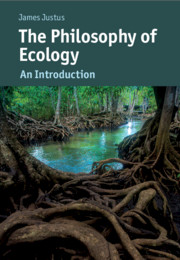Book contents
- The Philosophy of Ecology
- Cambridge Introductions to Philosophy and Biology
- The Philosophy of Ecology
- Copyright page
- Contents
- Figures
- Preface
- Introduction
- 1 The Ecological Niche
- 2 Distinctively Ecological Laws and the Reality of Biological Communities
- 3 The Balance of Nature
- 4 Modeling in Ecology
- 5 Biodiversity
- 6 Progress in Applied Ecology
- 7 Fact and Value in Applied Ecology
- References
- Index
5 - Biodiversity
Published online by Cambridge University Press: 28 May 2021
- The Philosophy of Ecology
- Cambridge Introductions to Philosophy and Biology
- The Philosophy of Ecology
- Copyright page
- Contents
- Figures
- Preface
- Introduction
- 1 The Ecological Niche
- 2 Distinctively Ecological Laws and the Reality of Biological Communities
- 3 The Balance of Nature
- 4 Modeling in Ecology
- 5 Biodiversity
- 6 Progress in Applied Ecology
- 7 Fact and Value in Applied Ecology
- References
- Index
Summary
This chapter describes the biodiversity concept and guides the reader through the growing scientifically oriented philosophical literature on biodiversity. Although the concept’s significance is common currency within environmental ethics, biodiversity has only recently garnered broader philosophical attention. Whatever the correct account of the structure and dynamics of biological communities, some are clearly more complicated than others. For example, tropical communities usually contain more species, there is evidence their species interact more intensely, these interactions are more variegated in form, and they exhibit more trophic levels than high latitude communities. Coined as a simple shorthand for “biological diversity,” “biodiversity” captures this notion of ecological diversity and much more, including developmental, morphological, and taxonomic diversity. How biodiversity should be characterized thus depends on how these systems are represented, particularly on how their parts are individuated, classified, and distributed among those classes. Several adequacy conditions on characterizing this diversity are proposed, and value-driven attempts to define the concept are criticized. It also makes the first connection, explored in later chapters, between ecology proper and the kind of applied ecology conducted in efforts to conserve biodiversity.
Keywords
- Type
- Chapter
- Information
- The Philosophy of EcologyAn Introduction, pp. 104 - 128Publisher: Cambridge University PressPrint publication year: 2021

